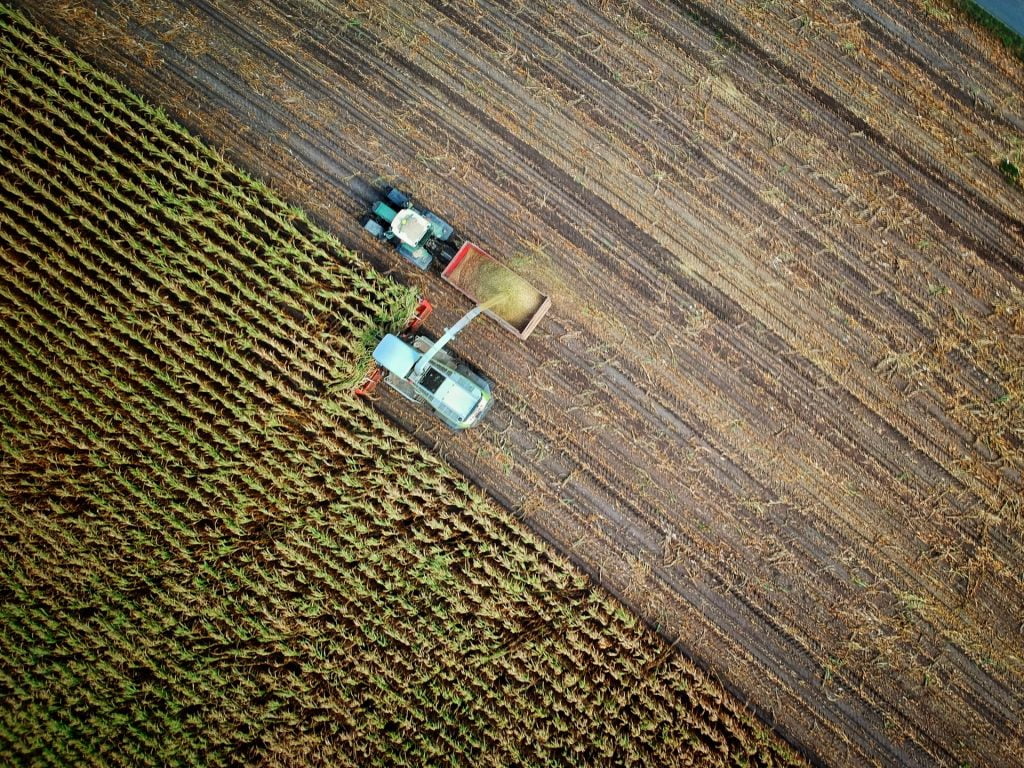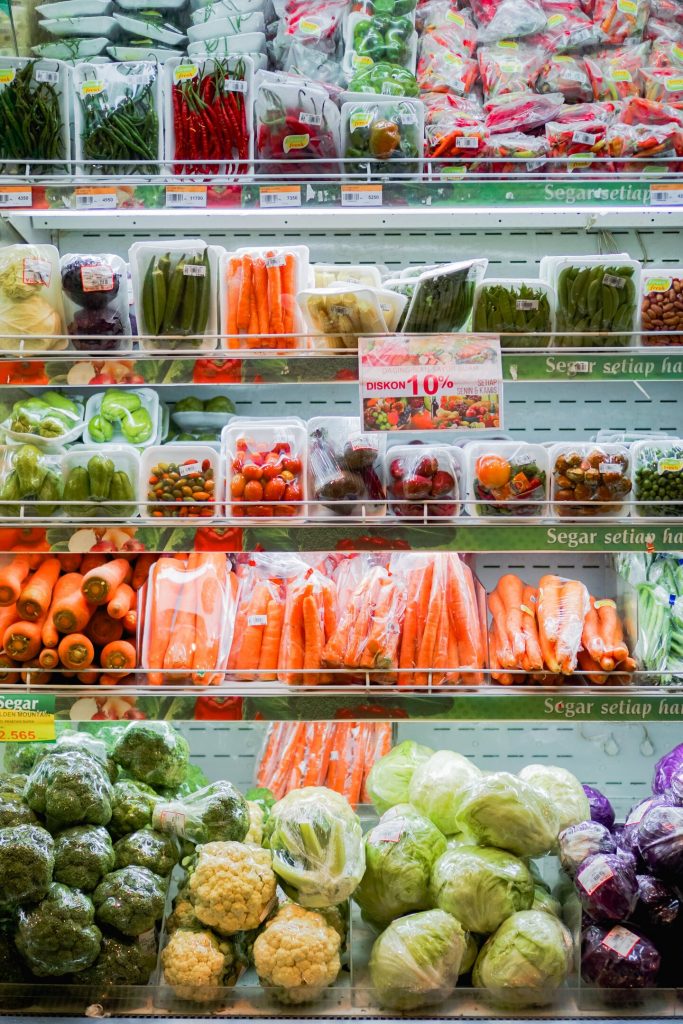Climate myths: Is organic food unequivocally better for the climate?
When we buy organic food, we feel a certain level of satisfaction. Organic food comes with a positive sign: We’re doing something good for ourselves and something ‘good for the planet’. But when it comes to our niche (if you’re here, it’s your niche too!), climate impact, is organic food really better for the climate? The quest for this answer has spurred valuable debates among scientists… but it can send every non-scientist’s head spinning. Let’s dissect it!
What does organic food mean to consumers?
In its pure essence, organic food automatically translates to high-quality products. In this sense, eco-labels have done an excellent branding job in awaking positive connotations. With every purchase of organic products, consumers feel a moral surplus [1]. This overall positive effect of organic food has had the scientific community coin the term ‘Organic halo effect’. One manifestation? Consumers of organic food believe that they consume healthier products in a more environmentally friendly, sustainable manner than conventional produce [2, 3].
But apart from perceptions, what information do consumers have about organic food? Consumers do not have enough information to accurately describe organic food [2, 4]. In one study, almost half of consumers show poor or very poor knowledge: For most of them, organic means local or home-grown, healthier or better in quality, free of additional chemical products and pesticides [2].
As any brand aficionado already knows, perceptions and information translate directly to revenue. Consumers are more willing to spend an extra buck on organic products because of the perceived premium of environmental and health benefits [2, 5]. Moreover, more affluent and more frequent consumers are more likely to buy organic food [2, 5] – in other words, the ones with the most purchasing power and the highest potential for loyalty.
What is organic food anyway?
It is clear why consumers are buying organic products but what are they actually buying? Organic food is a regulated practice that differs only slightly from market to market. Overall, organic farming prohibits the use of pesticides, additional chemical products such as synthetic fertilizers, and genetically modified organisms (GMO). Criteria for organic animal-based products are grazing, increased pasture, animal welfare promotion and the recommendation of using and conserving local breeds.
Organic food usually requires a certification that comes with verified compliance with the above criteria. Consequently, organic produce is heavily regulated.
Newsletter to-go?
Our special today is our Newsletter, including snackable tips, hearty climate knowledge, and digestible industry news delivered to your inbox
Is organic food as good for the climate as perceived?
…As perceived? With all that strong of a halo effect, certainly not! However, is organic food better for the climate? It is definitely beneficial to biodiversity [6]. But regarding climate impact, we will not drag you around in this one: The answer is not singular and finding the answer –for us simple civilians– can be a maze. That’s why we are so thankful to our Science team for helping us navigate! Here’s what they have to say.
Calculating the climate impact of organic food production depends firstly on many parameters; secondly, how many of these parameters we put under the microscope; thirdly, since neither organic nor conventional farming is at 100% global implementation, we need to look at possible scenarios – what assumptions do we make in each scenario; and finally, the timeframe we project these assumptions upon.
Yield
Let’s cut to the chase: The reason conventional farming is currently the way to go because it covers our demand in volume of food. When it comes to yield, efficiency is what mainly characterizes conventional systems. Organic systems on the other hand –even the most efficient ones– produce lower yields [7].
How does this affect the climate impact of each production approach? To put it simply, organic farming requires 40% more land to generate the same amount of e.g. tomatoes [7]. In turn, land use– which is what happens when land, a scarce resource, is used for farming or any other economic activity – and more specifically, the activity of land use change, e.g. from forest to cropland, impacts emissions… Which brings us to the next part.
Land use change
The question that comes with a lower yield is “if all food is produced organically, will our global needs for food be covered?”. The answer is “highly likely not” and the consequential question is “how will we compensate for the remaining volume?”. The answer derives from our global food production network.
A popular 2019 study that got a lot of attention from press investigated precisely that. The authors explore the scenario of all-organic production in England and Wales and estimated that the shortfall in domestic production would have to be covered by imports. These imports would require 5 times the land used locally for organic food but overseas. Overall, this means that 50% more land would be needed for agriculture [7]. In a more conservative estimate from another study, organic farming would still require 16-33% more land [8].
Another study presents comparisons based on the type of food: organic plant-based food requires 20% more land, beef is at 65%, pork is at 85%, and poultry requires 3 times more land than conventional production [9].
Why do we care about land use and land use change? To put that in perspective, as you know, 25% of global greenhouse gas emissions come from food. A little less than half of them come from land use change. The consequence? If we require more land to produce food, we would need to change more of it. And we would probably need to resort to deforestation to do that.
“But isn’t this a hypothetical conclusion?”. Yes, it is. And it has a hypothetical flipside too: If we don’t change more land, if we make use of all the efficiency of conventional farming, what happens to the land that we “save”? Let’s dig into it.
Carbon sequestration
The largest climate opportunity from conventional agriculture is that we can enable the remaining land resources to revert to their natural vegetation or reforestation. The word opportunity is not random here: Reforestation is our greatest organic tool for carbon sequestration, point-blank.
However, there are opportunities for carbon sequestration in organic farming as well. Firstly, produce comes from plants (yes, for real!) which capture carbon (indeed!). More plants? More carbon sequestration! Moreover, soil in land used in conventional farming loses carbon. If the same piece of land is used for organic farming, the soil will be capturing carbon until it reaches an equilibrium [7].
Nevertheless, even in this scenario, the carbon sequestration opportunity is larger if we use the land for reforestation. What actually happens with land is only for time to tell.
Now I know. But what’s better for the climate anyway?
It varies between different types of food! Depending on which of the parameters outlined above are included in the scope, studies show that overall, there is no significant difference in climate footprints per kg product [10, 11, 12, 13]. But we won’t leave you without some snackable rules of thumb.
Some key climate takeaways for organic and conventional farming:
- Emissions from land use change and carbon sequestration are an area of concern in the field, regardless of the conclusion.
- Organic farming is more strictly regulated: Accountability, hence more resources in organic practices result in more precise operations [14].
- On the consumer side, the carbon footprint of organic diets may be lower but the reason is even more interesting than the result itself! Organic shoppers tend to consume types of food with a lower climate footprint – A study showed that the conventional diet in Germany included 45% more meat than the organic diet [9].
- On that note, as always, what type of food eat matters most to your climate footprint than the different variations of a type.
Is it us or do you also see a pattern here…? 👆 Every myth debunking we have ventured concludes with the same result: If your climate footprint is a concern to you, what you eat is the single most impactful choice you can make for the climate.
Related Posts
The great debunking of climate myths: Packaging
Have you ever walked through a grocery store aisle and caught yourself raging or raving? Why does this single cucumber need a plastic wrap?Why package two portions in one package of chicken?Juice in a
The great debunking of climate myths: Transportation
Enjoy this ribeye steak, friend! Yes, its carbon footprint is infamously high but don’t worry; I buy all my beef from local farmers.Hey roomie, when you get to the grocery store, get the local tomat





